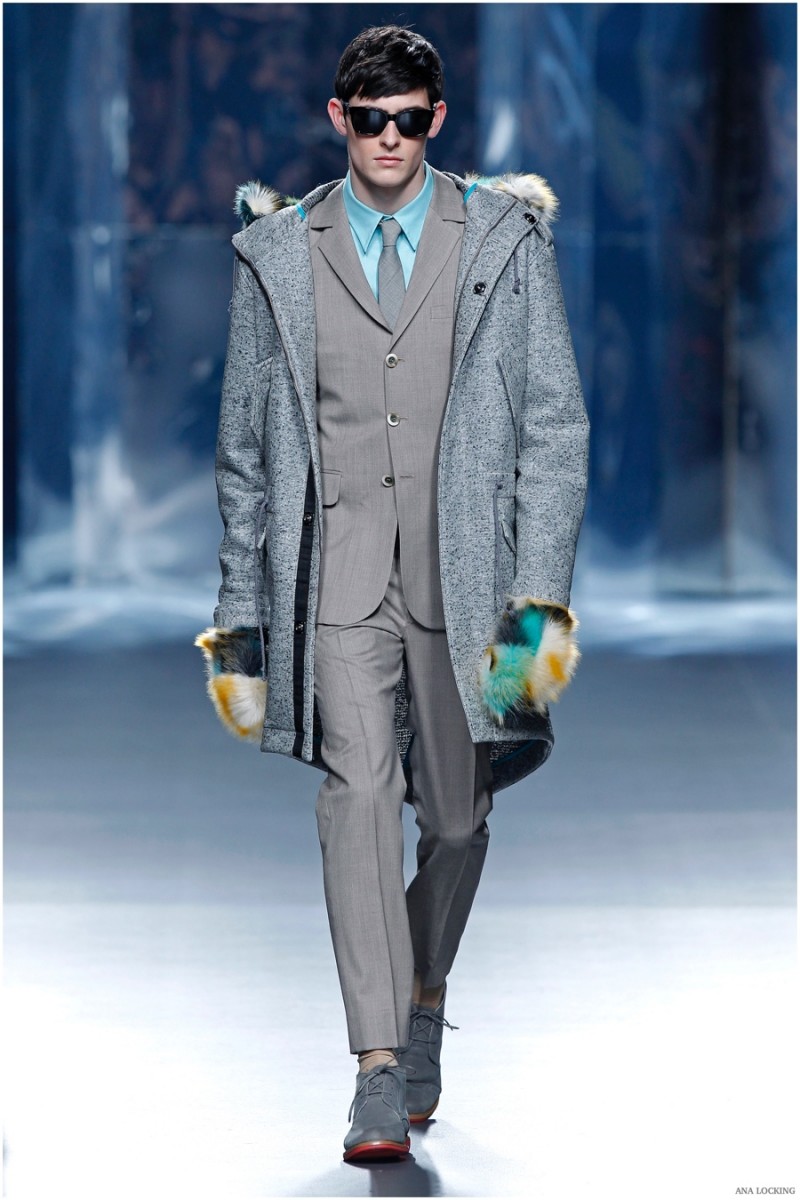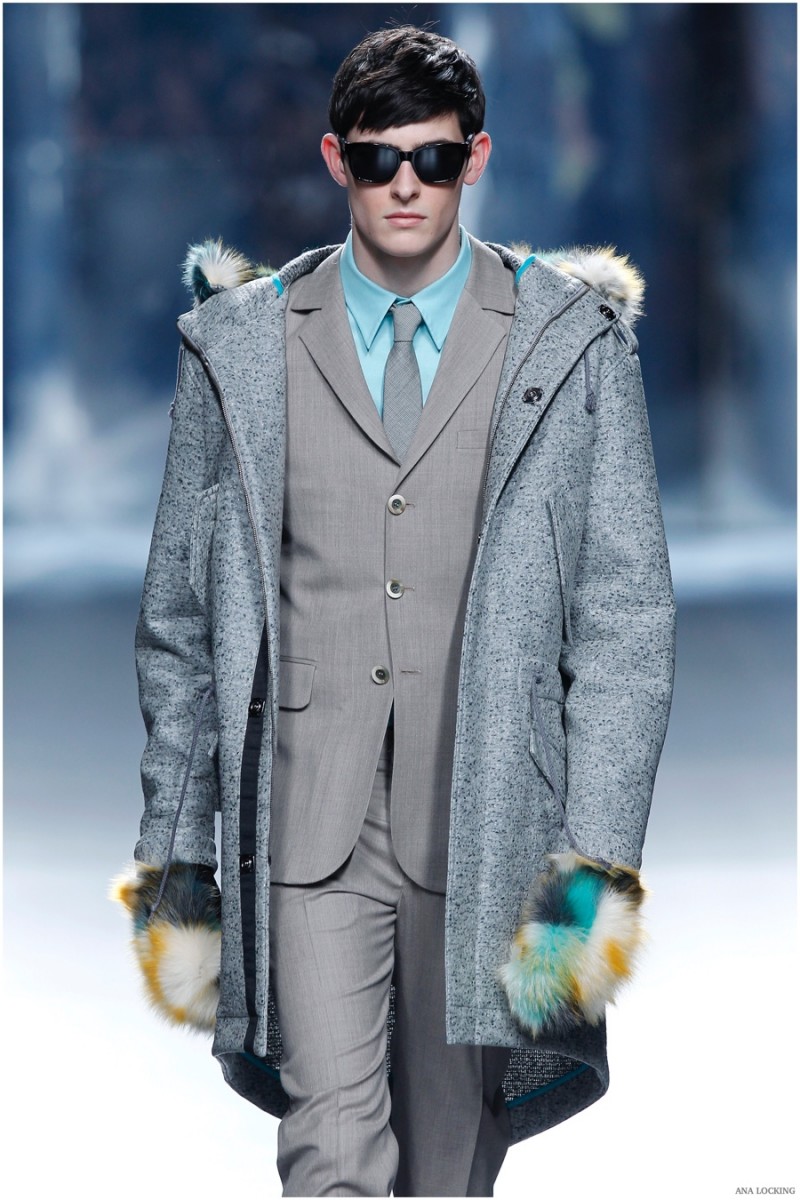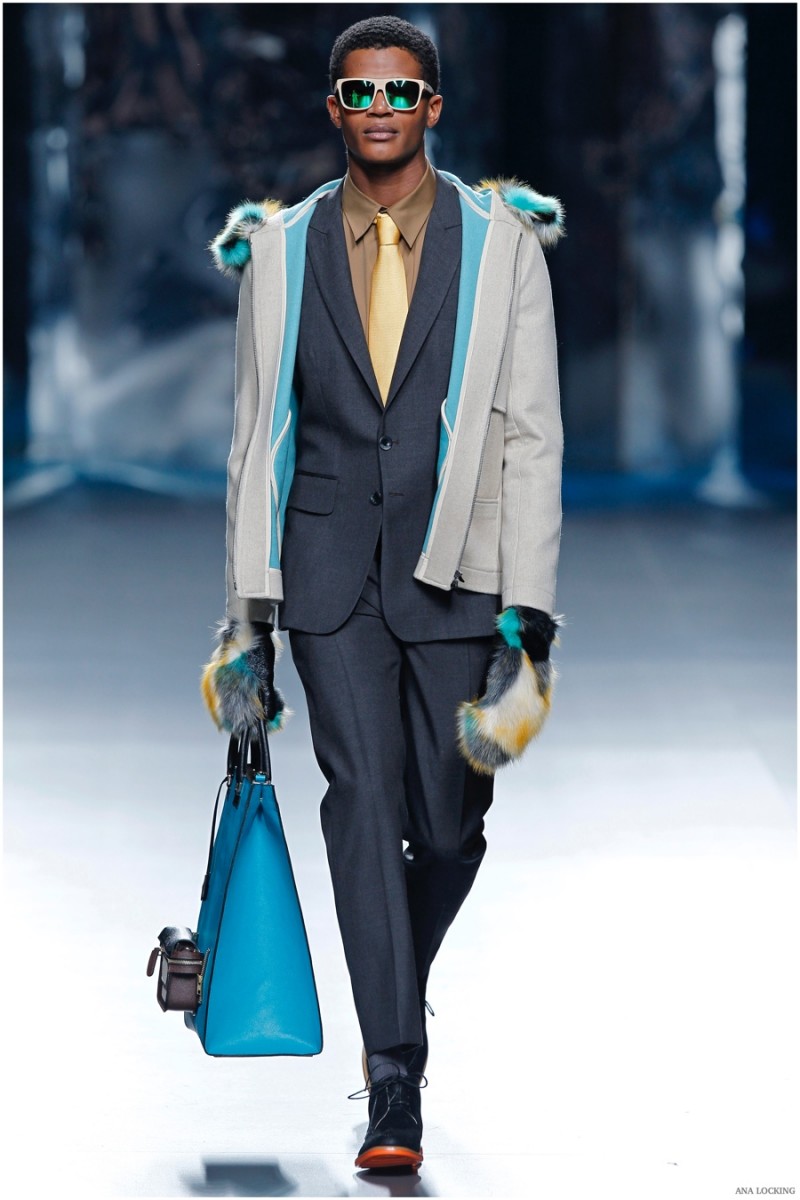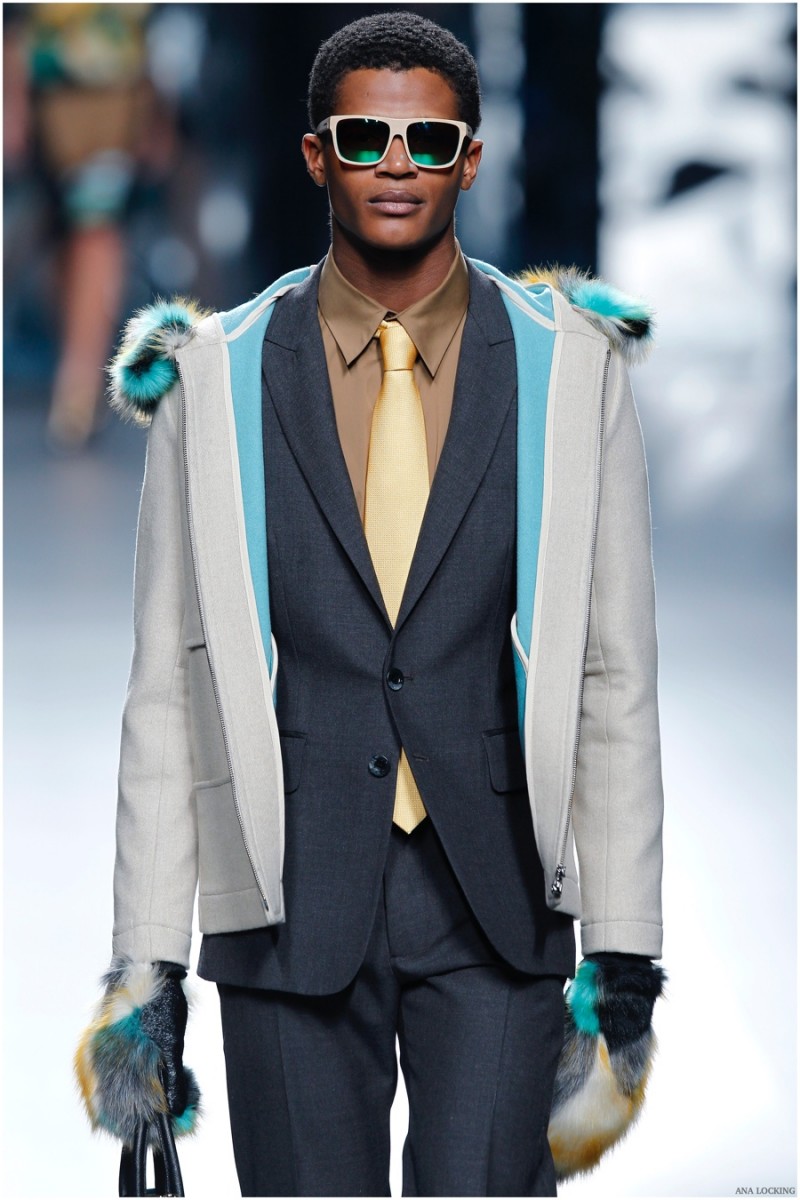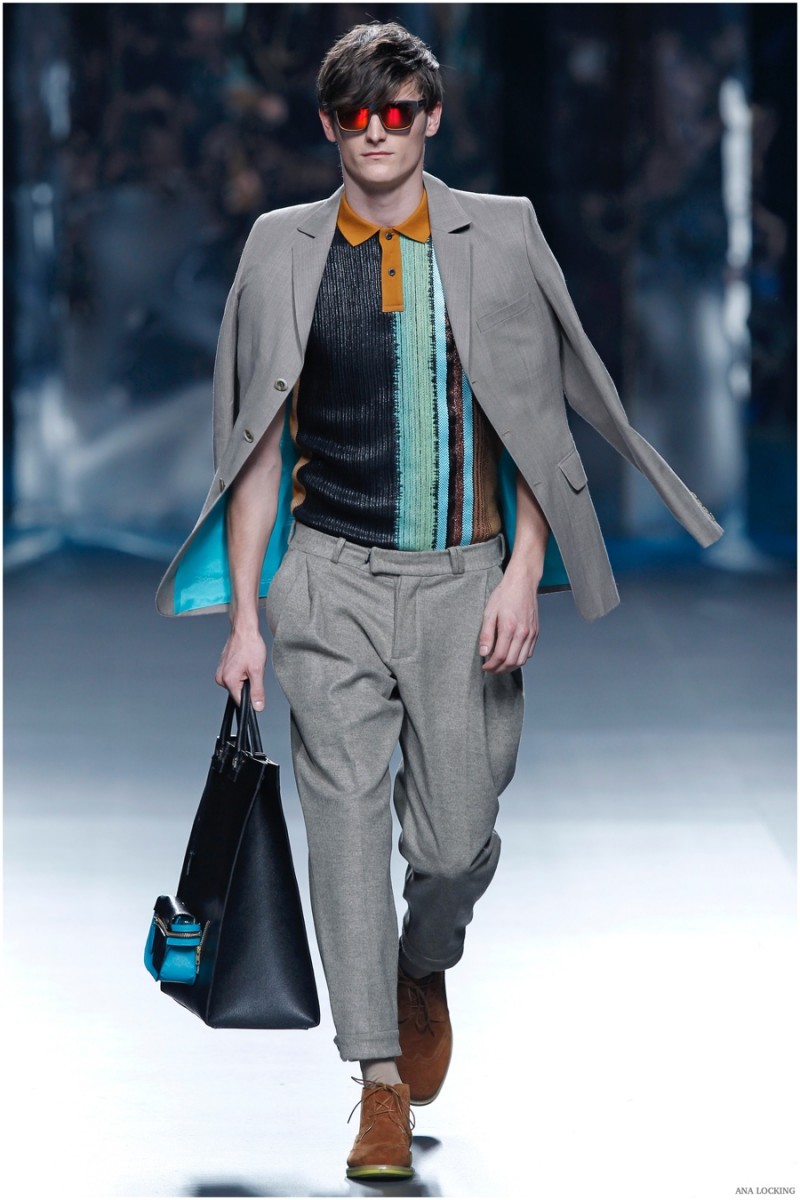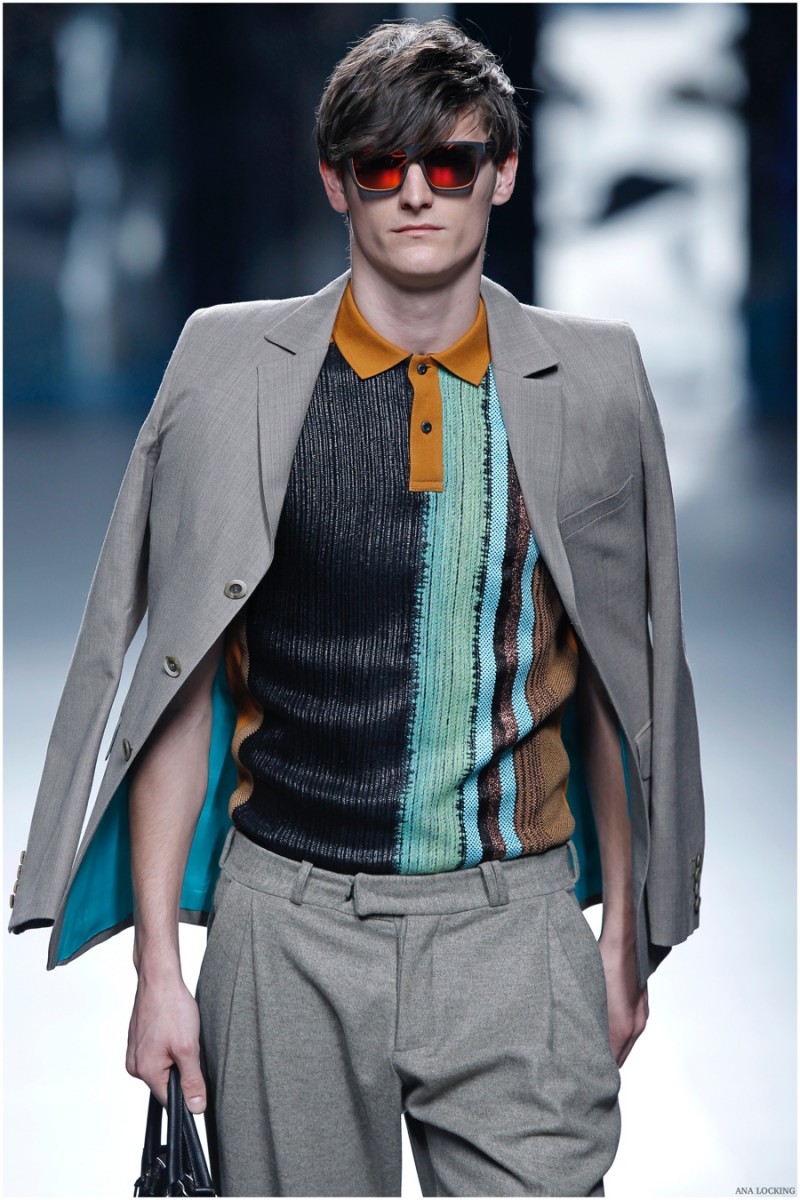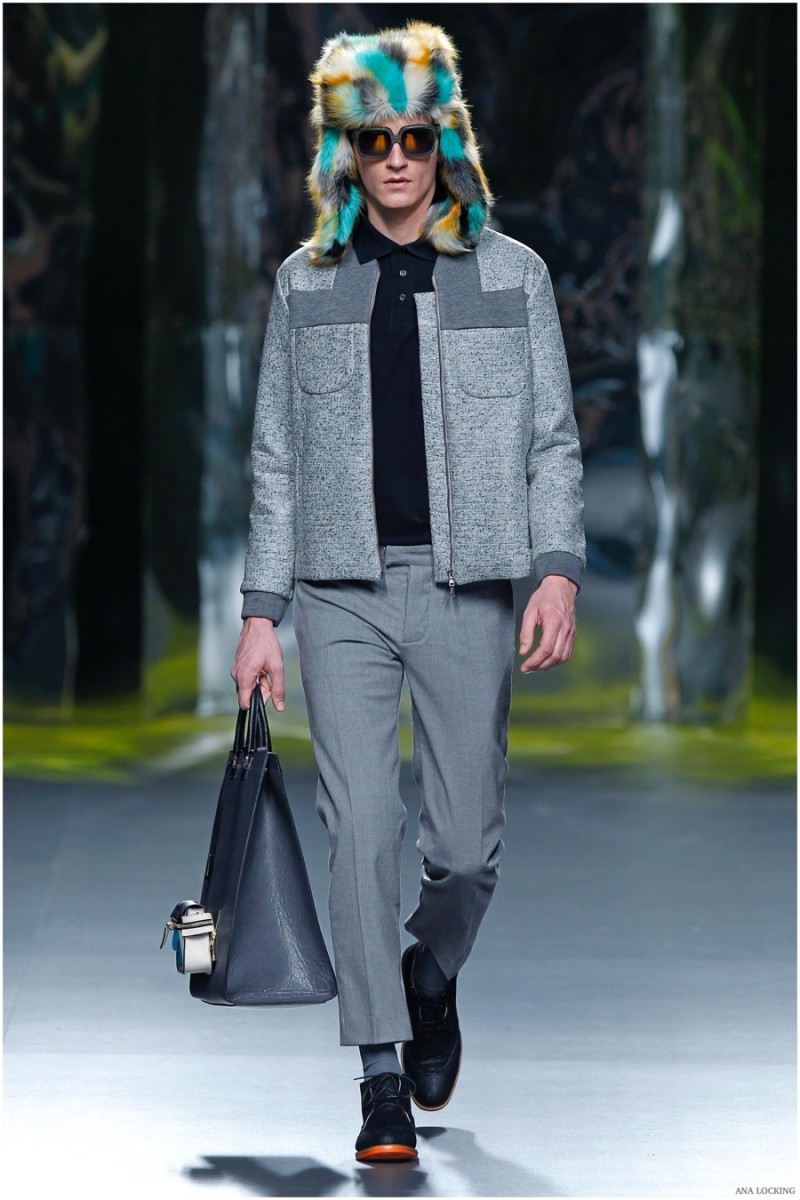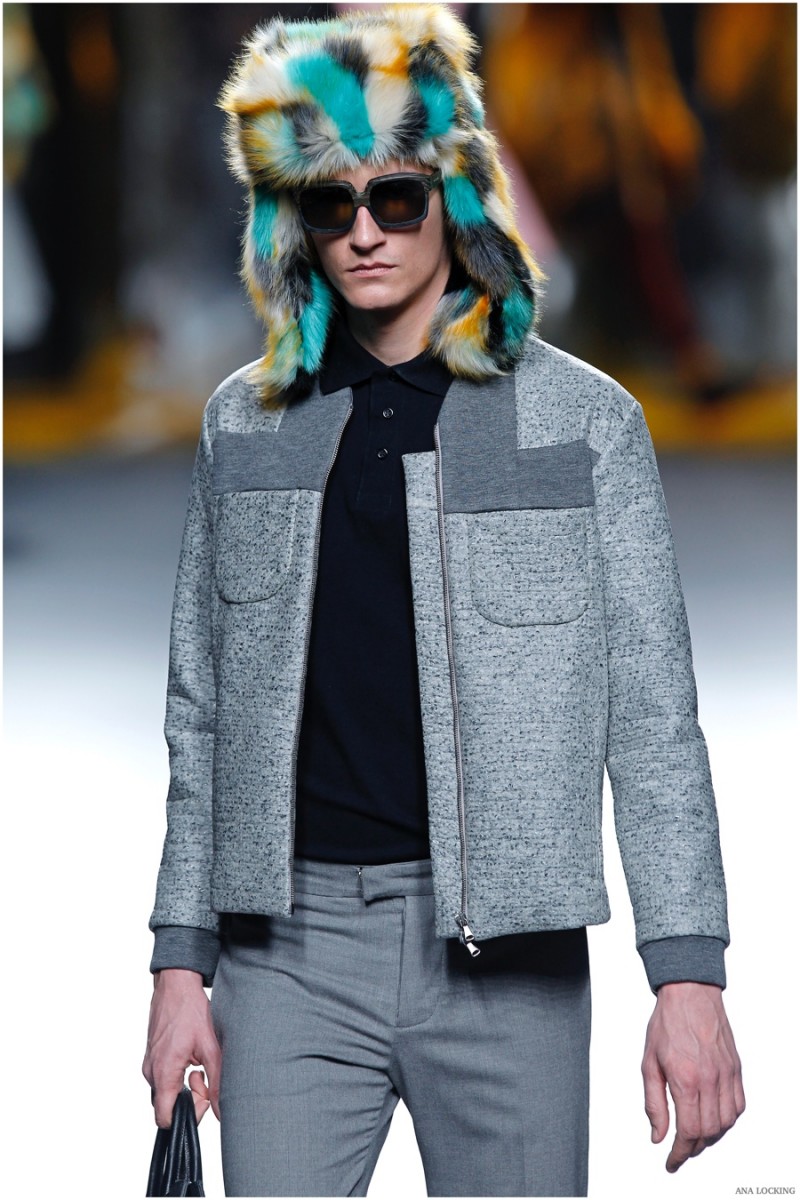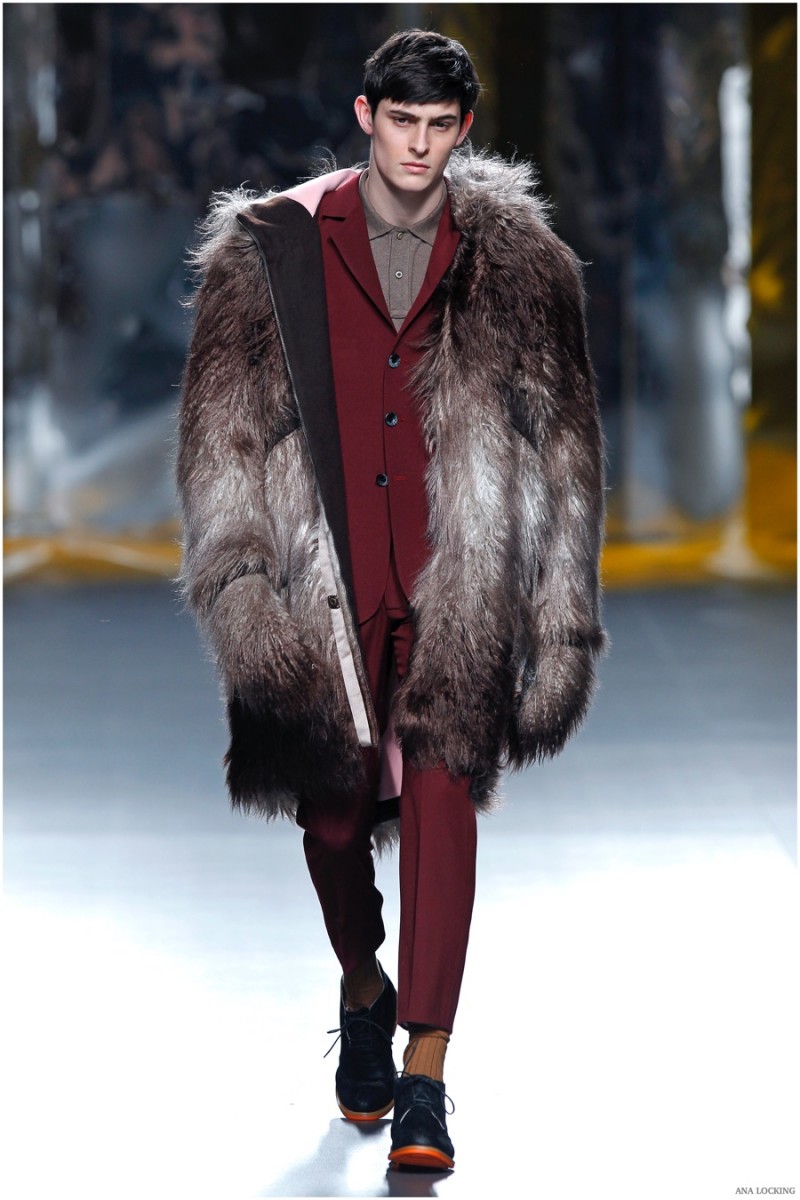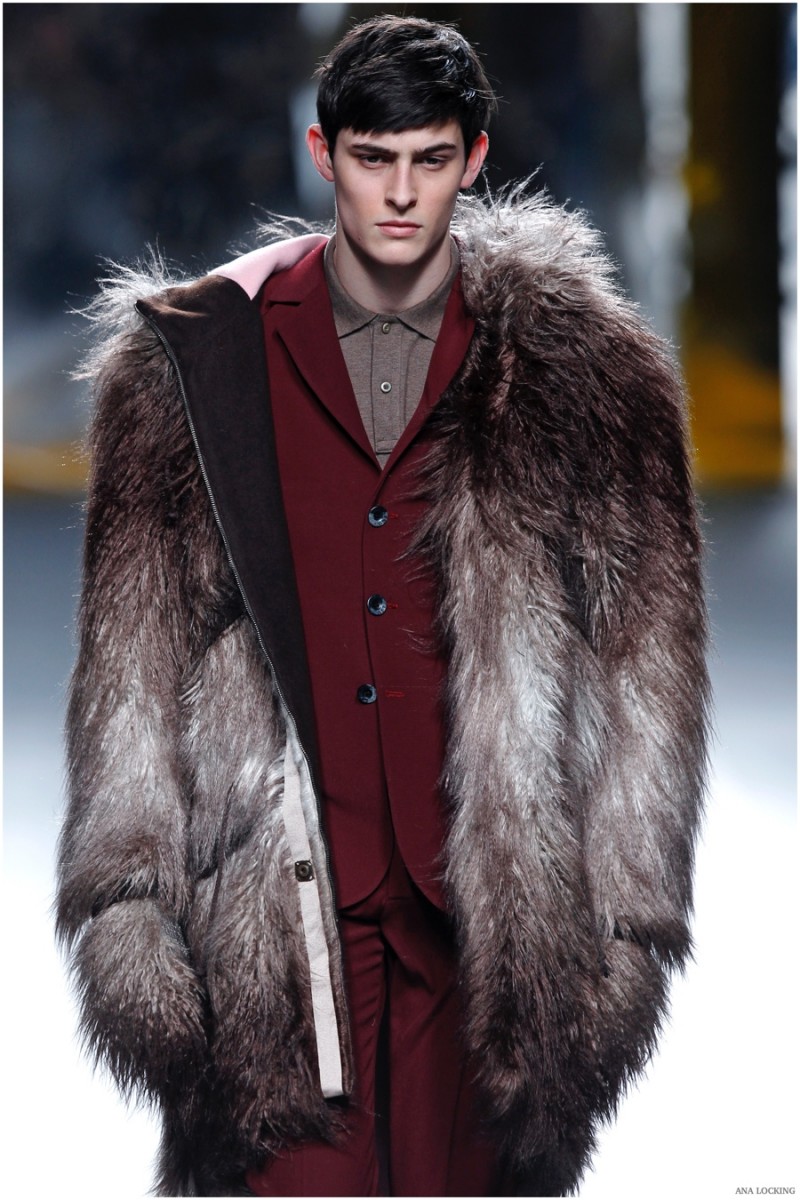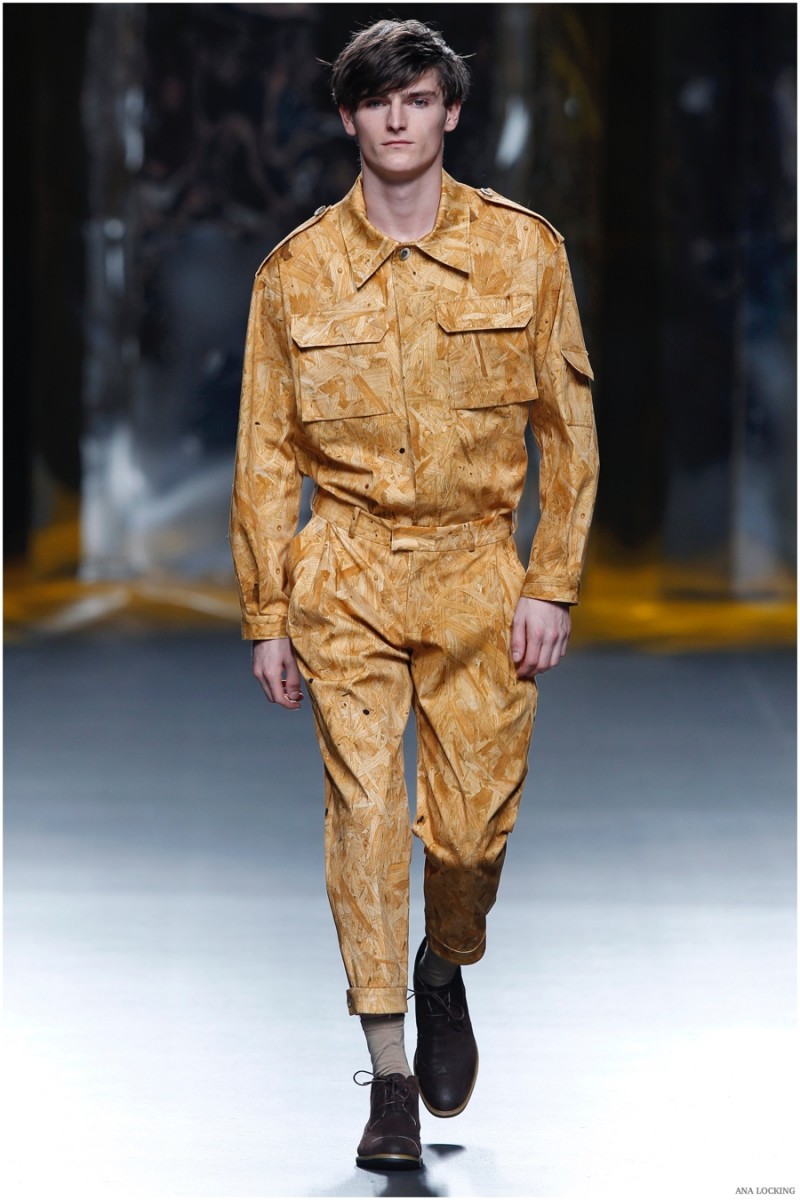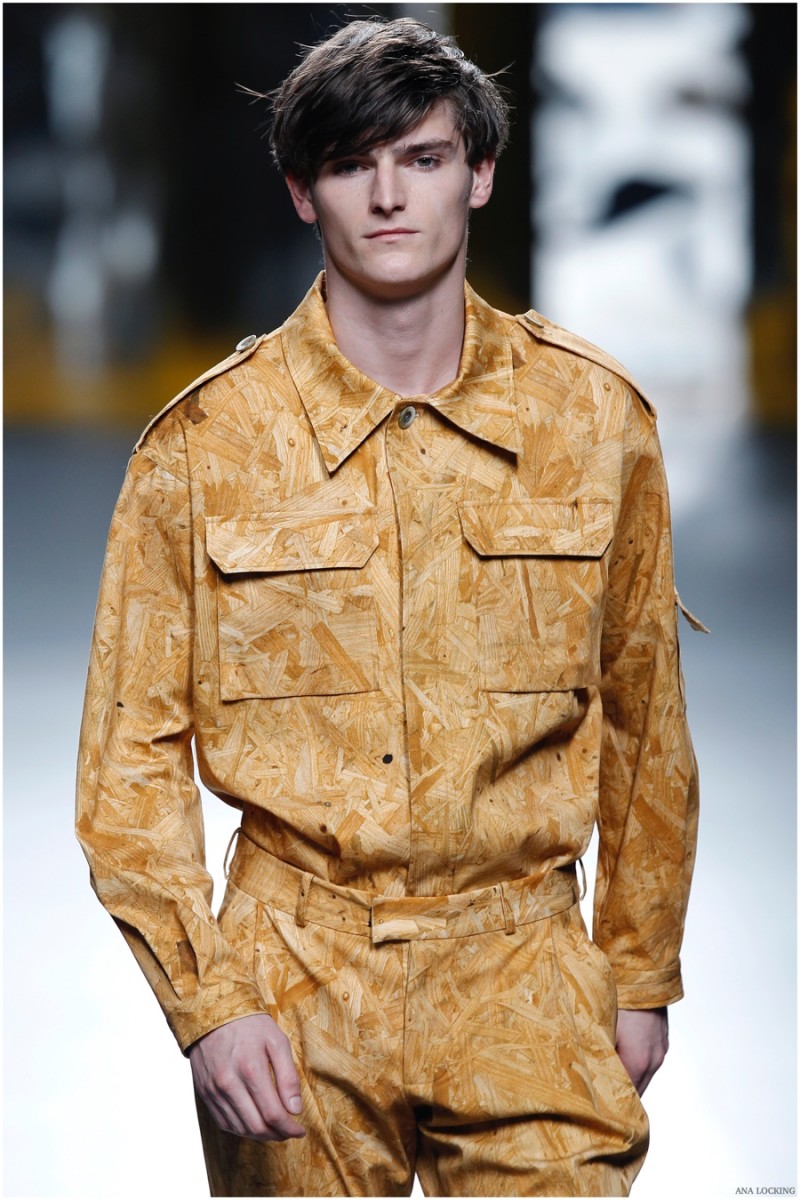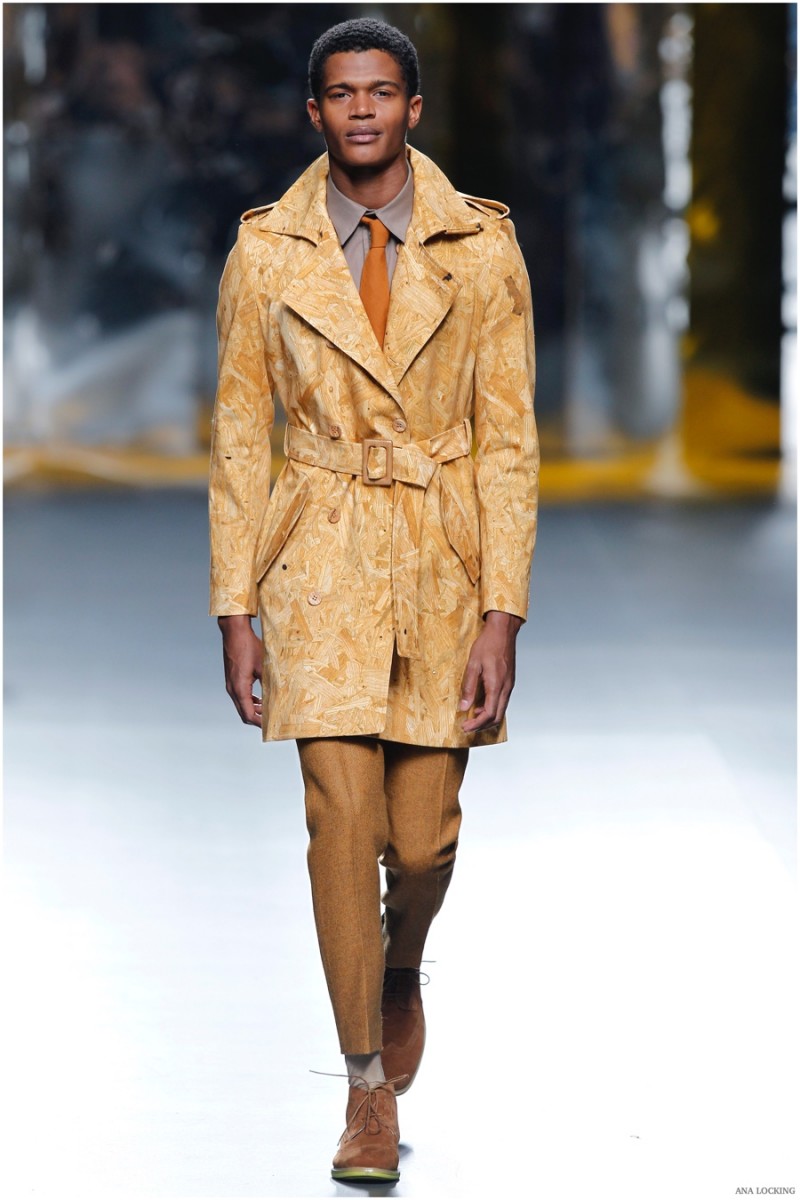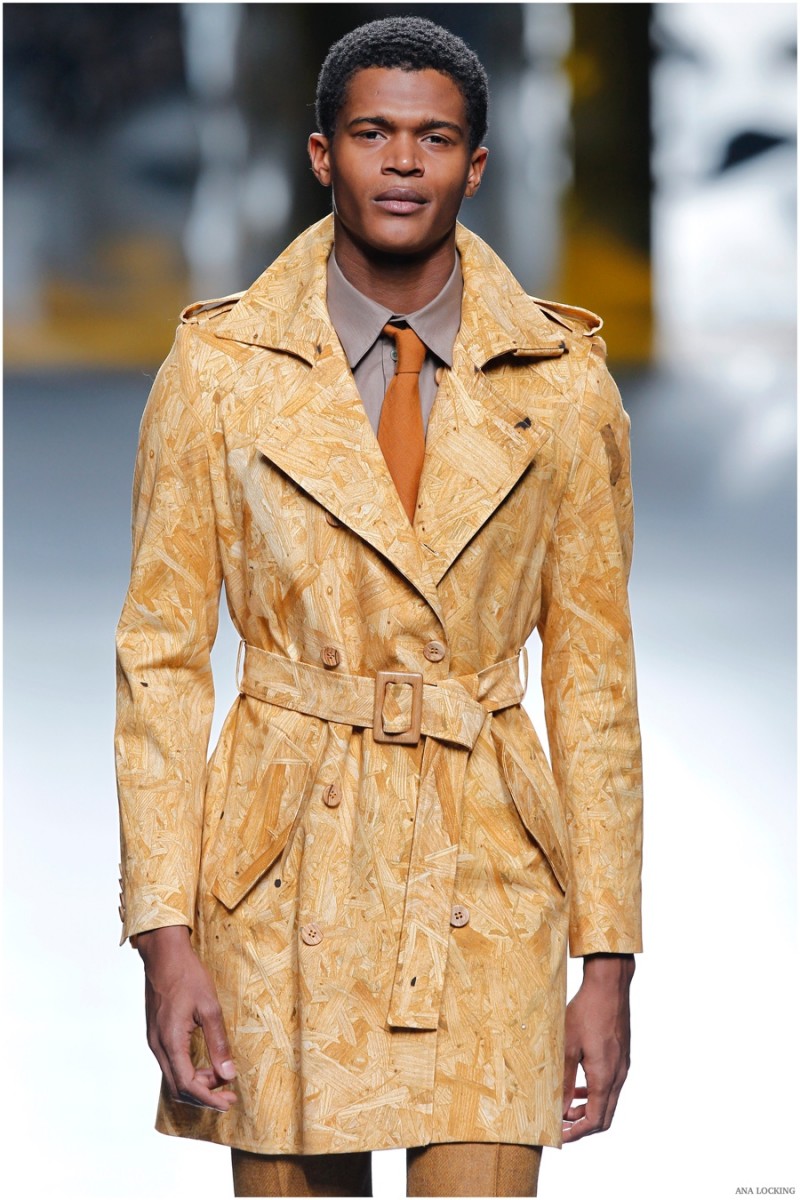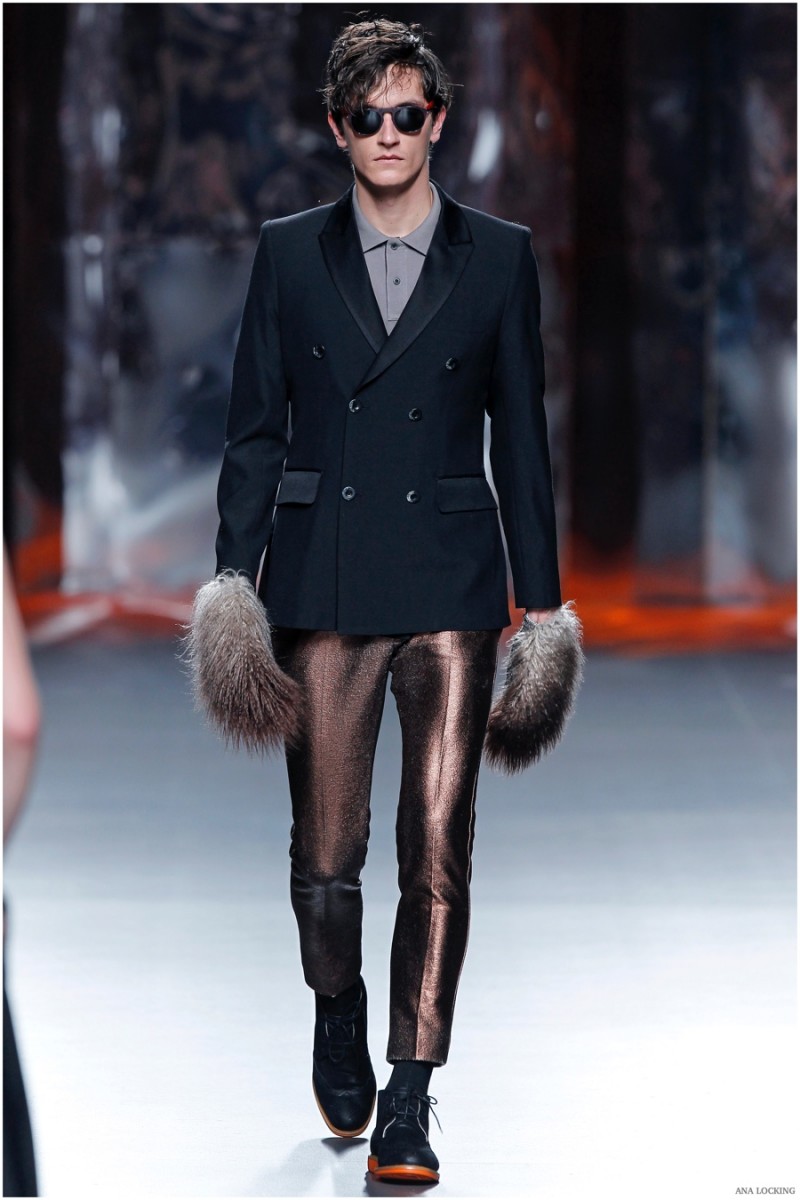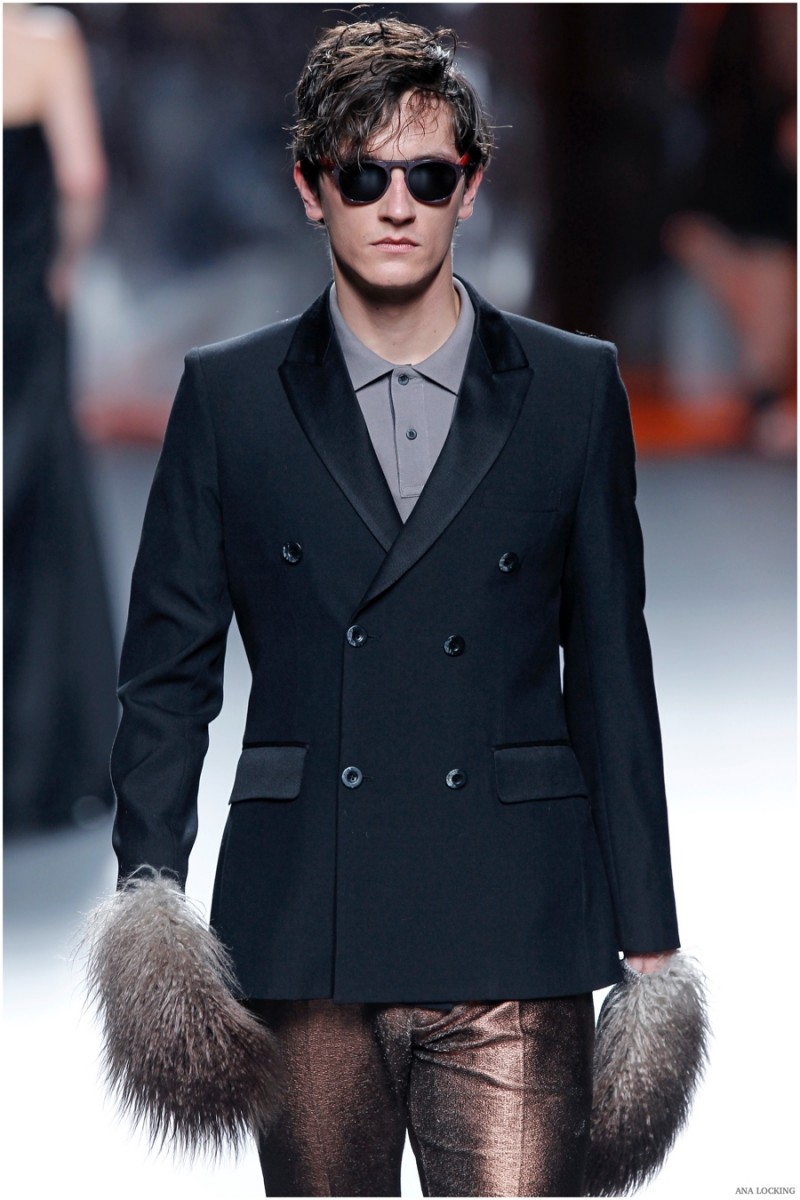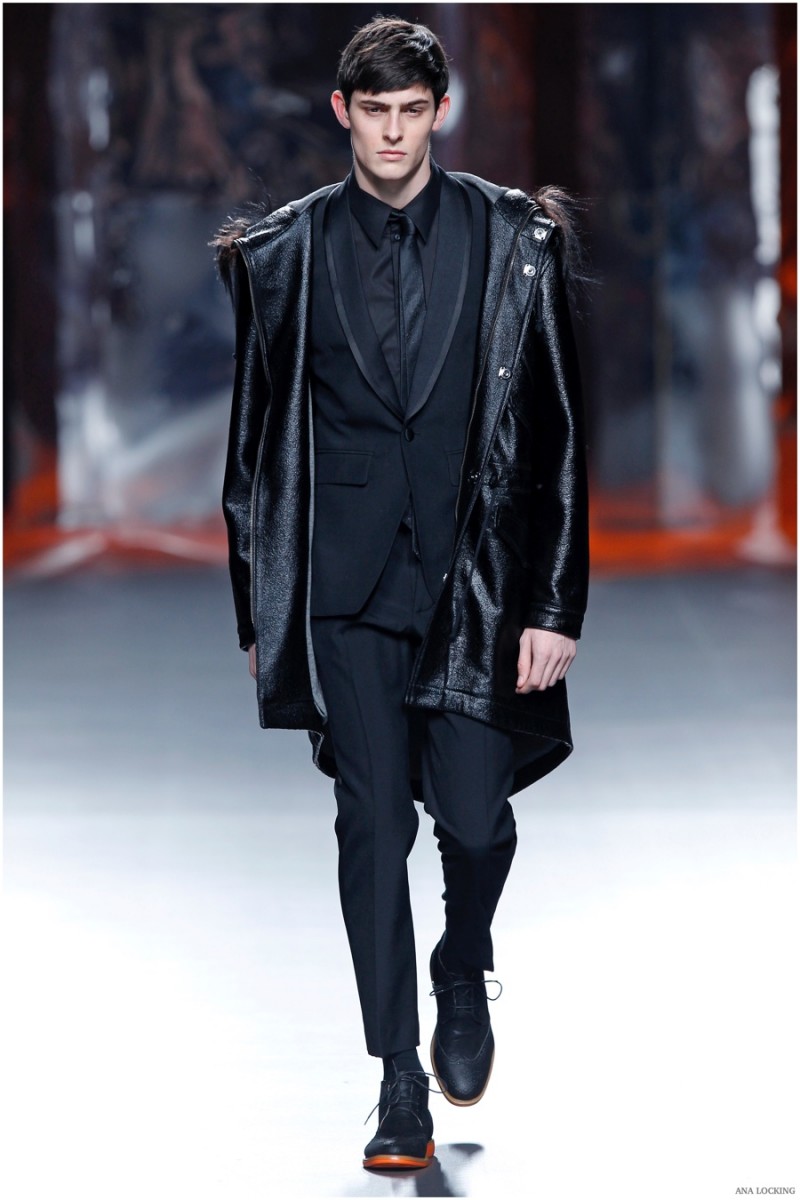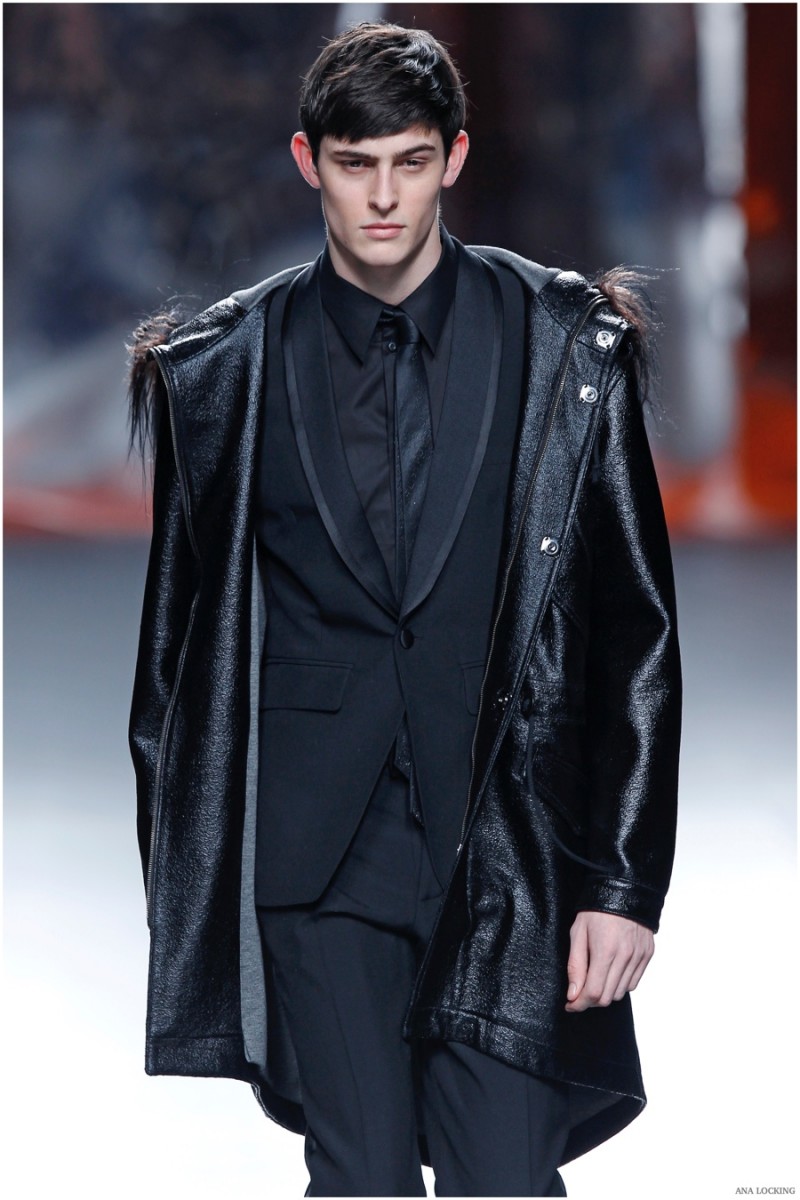Unveiling her latest collection during Madrid Fashion Week, designer Ana Locking delivered another rich outing. For her fall 2015 lineup, Locking was inspired by the idea of the doppelgänger. This translated into an idea of opulence of dualities. Double-faced fabrics were married with furs for a regal outing, bursting with color. Slim, dapper three-button suits were paired against metallic separates with a modern edge, oversized furs with a glamorous attitude and intricate prints.
The designer shares, “Etymologically speaking, doppelgänger is the German word used to describe the double of a living person. It comes from ‘doppel’, which means ‘double’, and ‘gänger’, which means ‘walking’. The term is used to designate any double of a person, commonly in reference to ‘someone who supplants identities’, but also the phenomenon of ‘bilocation’, whereby a person can be at two different places at the same time.
At present, in view of the different theories within the fields of astrophysics and particle physics, such as the theory of relativity or string theory and its reflections on space-time and the fifth dimension, we find ourselves in a situation in which the different planes of the universe would create many doppelgängers at the same time, in the past, present and future, thus leading to an infinite doppelgänger.
Another of the many aspects of the doppelgänger refers to the ‘I want to be you’. We live in the ‘era of impostors’, surrounded by people who not only want to be like the people they envy, but who even steal their identities and personalities in order to live that life as if it were true and embellish and eliminate the mediocrity of their own. They seek their own means of survival through lies, which in time they themselves confuse with reality. They end up becoming the great swindlers, charlatans and, of course, the great impostors.
At times, we dream about living other lives and the world of film allows us to temporarily escape our own reality and gives us the opportunity to feel as if we were other people.
I am fascinated with the actor’s doppelgänger, his ability to build his character as a part of himself, only to then shape it with elements and experiences drawn from his own investigations, even crossing the line between simulation and reality. The more I wonder if what I see on the screen is not the product of a performance but rather of reality the more I become fascinated by the capacity of the method chosen by the actor to make me forget that it is a performance.
I am impressed and terrified at the same time thinking that, in the midst of a creative process, we are moving between reality and madness, driven by an obsession with total immersion, the lack of an objective reality and an intense dedication. This might be the only key I can understand when it comes time to face my collections and the concepts I try to symbolize. Perhaps that process is in itself a real attempt at doppelgänger.”
